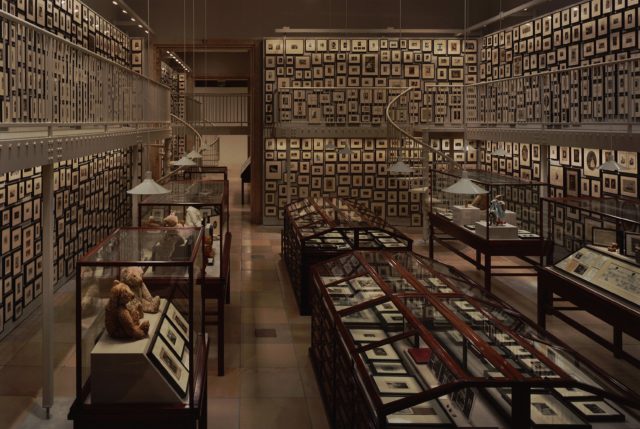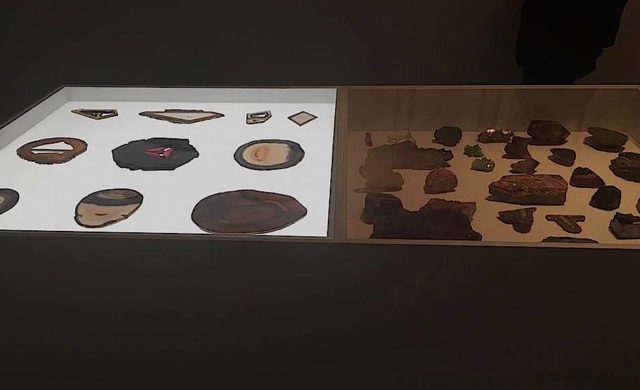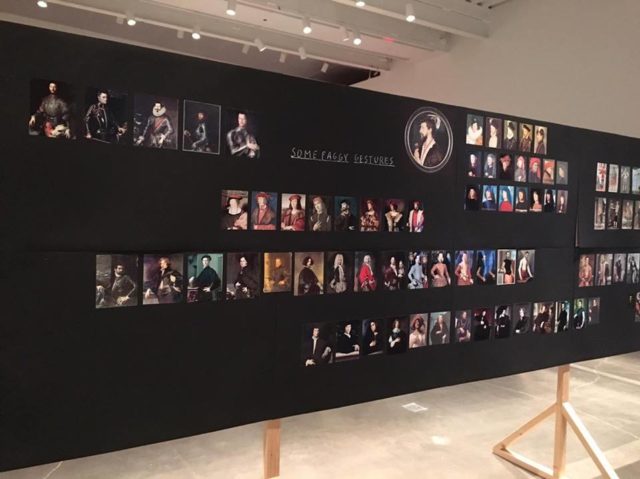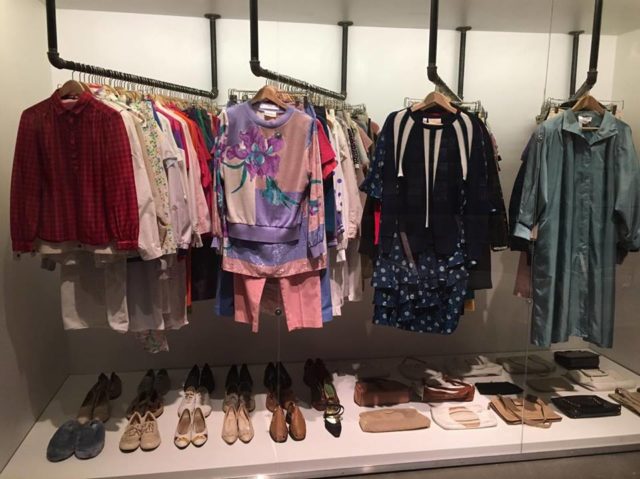
Ydessa Hendeles, Partners (The Teddy Bear Project), 2002 (Photograph by Robert Keziere; Courtesy of the artist and the New Museum)
The Keeper
New Museum
235 Bowery, New York, NY
On view until September 25, 2016
I wonder what the crew of A&E’s guilty pleasure Hoarders would say about the New Museum’s recently opened exhibition The Keeper. With four floors of artists’ obsessions, the collecting impulse on view is more manic and compulsive than merely an academic archival interest. In fact, the exhibition looks a lot like the aftermath of a Hoarders Anonymous meeting.
Before attending the group exhibition, I expected the show might too easily and predictably engage with the current archival trend in contemporary art. I’m so glad I was wrong–I wasn’t looking forward to donning white gloves to paw through precisely organized archival boxes.
Instead, The Keeper investigates artists and other creative minds’ drive to save. Multiples of artists’ singular focuses fill the museum whether teddy bears, apples, string, snowflakes or just trash. With its repetitive aesthetic, the exhibition appears like a gathering of several museums in one. There is a neurotic quality to much of the work in the show, particularly in comparison to studied archival methods. This feels as refreshing as it is unhinged.
The most talked about work will undoubtedly be Ydessa Hendeles’ Partners (The Teddy Bear Project). Hidden behind a wall on the second floor, the vast, awe-inspiring piece features over 3000 vintage photographs of people with their teddy bears and vitrines of antique dolls. The installation is so overwhelming that you’ll either crave the warm embrace of your childhood teddy or run screaming.
But for me, the most exciting element in the show is its inclusivity. The Keeper places artists from the late 19th and 20th centuries alongside today’s contemporary artists. The show also presents outsider and visionary artists, as well as literary and cultural figures. By combining these various personages and eras, the New Museum importantly affirms that this impulse to gather is an ongoing artistic phenomena.

Installation view of Roger Caillois’ Selection of one hundred stones from the collection of Roger Caillois, n.d. (Collection Muséum national d’Histoire naturelle, Paris; photo by author)
The exhibition’s expansive reach also allows for unlikely connections between works and their makers. Take, for example, the third floor, which juxtaposes French intellectual Roger Caillois’ almost dorky gemstone collection and Lolita author Vladimir Nabokov’s obsessive sketchbook studies of butterflies. Seeing the duo’s unexpectedly similar and little-known hobbyist tendencies together in a museum felt surprisingly fresh.
This doesn’t mean there aren’t some questionable selections in the ambitious exhibition. In the stairwell between the third and fourth floors, a vitrine showcases melted artifacts from the National Museum of Beirut. The ancient relics survived–just barely if their condition is any indication–the Lebanese Civil War. While they are historically significant, I couldn’t help but wonder why these specific artifacts were included. I assume this was the curators’ nod to the museum itself as a site for collecting and preservation–a difficult task since the New Museum doesn’t have its own permanent collection. Instead, it just seemed beside the point.
Taken as a whole, however, The Keeper successfully reveals the ability of collections to act as records of alternate histories. The exhibition has parallels to queer theorist Jose Munoz’s essay “Ephemera As Evidence,” which is somewhat shockingly not referenced in the hefty exhibition catalogue. Munoz, in his essay, highlights how ephemera can preserve queer feelings and desires repressed by a phobic society. While not queer per se, The Keeper, like Munoz, insists that objects can exist as proof of underrecognized personal and political narratives that may otherwise be lost.

Installation view of Henrik Olesen, Some Gay-Lesbian Artists and/or Artists relevant to Homo-Social Culture Born between c. 1300–1870, 2007 (photo by author)
The work that most obviously exemplifies ephemera’s power to undermine monolithic histories is Henrik Olesen’s Some Gay-Lesbian Artists and/or Artists Relevant to Homo-social Culture. The installation resembles a subversive class project that might piss off your stodgy art history professor. Olesen affixes an extensive assembly of printed art historical reproductions and biographical materials onto black paper-covered display walls. Spanning centuries, these printouts essentially locate a lineage of same-sex desire throughout art history.
Some materials are more predictable than others. I think most viewers would anticipate references to Thomas Eakins’ virile homoeroticism or a row of portraits of Walt Whitman. However, the most fascinating and–at times–hilarious aspect of the installation is his arrangement of artistic reproductions into sections. One section is “Some Faggy Gestures,” which highlights the limp wrists and swishy air of aristocratic portraits.
On one hand, Olesen’s installation is nothing new. With recent identity-driven exhibitions and publications such as Hide/Seek and Art & Queer Culture, sexual and gender identity is more visible than ever before in art. And yet there are still art history classes where it is controversial to discuss the impact of Jasper Johns and Robert Rauschenberg’s relationship. Due to this continued refusal to consider queerness in art history writ large, Olesen’s alternative canon becomes a necessary endeavor.

Howard Fried, The Decomposition of My Mother’s Wardrobe, 2014–ongoing, 294 wardrobe items, (Courtesy the artist and The Box, Los Angeles; photo by author)
While Olesen deals with gaps in centuries of history, a nearby installation shows the equal importance of preserving personal losses. The installation is Howard Fried’s The Decomposition of My Mother’s Wardrobe, which consists of racks upon racks of sweaters, windbreakers, dresses, purses, heels and fuzzy slippers. As the title indicates, these garments once belonged to Fried’s mother who passed away in 2002. Keeping his mother’s clothing since her death, he allowed them to decompose naturally in contrast to the installation’s sterile presentation behind glass at the museum.
Once you get past the creep factor and its similarity to Norman Bates, The Decomposition of My Mother’s Wardrobe is an oddly touching musing on mourning. Fried’s installation reminded me of the well-known and devastating scene in Brokeback Mountain in which Heath Ledger’s character Ennis embraces his dead lover’s shirt after his death. In both the film and installation, clothing becomes a tangible and tactile reminder of the deceased even when they are no longer physically present.
As seen quite obviously in The Decomposition of My Mother’s Wardrobe, there is a poignant melancholic strain that runs throughout The Keeper. The act of collecting in the exhibition becomes a battle against loss. Whether fighting for knowledge, remembrance or just a feverish fanaticism, these hoards reveal a powerful refusal to surrender to the erasure of time and history.


Comments on this entry are closed.